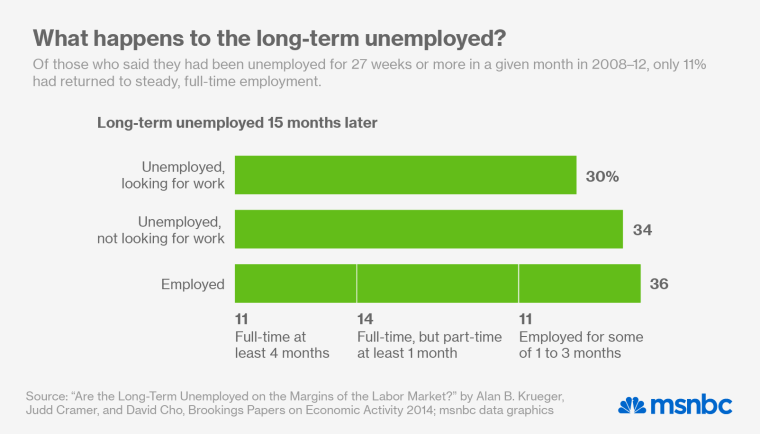What happens to the long-term unemployed?
They're not likely to find steady, full-time work any time soon, according to a new study.
Three Princeton University economists found that only 11% of Americans who are long-term unemployed find steady, full-time work a year later, according to data from 2008 to 2012. What's more, only 39% have found work at all during that year—even for a brief period of time, "highlighting that the long-term unemployed frequently are displaced soon after they gain reemployment," the authors Alan Krueger, a former Obama economic adviser, Judd Cramer, and David Cho wrote in their paper.
What has happened to everyone else? Of those unemployed for six months or longer, about 30% are still looking for work and failing to find it a year later. But even more people have simply stopped looking for work altogether: 34% are no longer in the labor force, according to the paper presented at the Brookings Institute Thursday.

The findings show why the fate of the long-term unemployed is a growing concern. While the short-term unemployed are finding jobs relatively quickly, the long-term unemployed aren't benefiting nearly as much from the recovery—even in states with the lowest unemployment rates. The authors examined the 14 states where unemployment rate was the lowest, at an average of 4.4%.
"Even in those 14 states, long-term unemployment grew dramatically during the recession, reaching 4.5 times its historical average, suggesting that long-term unemployment will be a lingering problem even if the unemployment rate returns to normal," the paper says.
